Mold under laminate flooring is a hidden menace that can wreak havoc on your health and property if not identified and addressed promptly. However, if you can be able to tell and unveil the early signs to look out for to identify the presence of mold under laminate flooring. From discoloration and warping to persistent allergies and respiratory problems, these warning signs should not be ignored.
Besides telling the early signs on how to prevent mold growth, you should be able to know the necessary steps to take if you suspect mold under your laminate flooring.
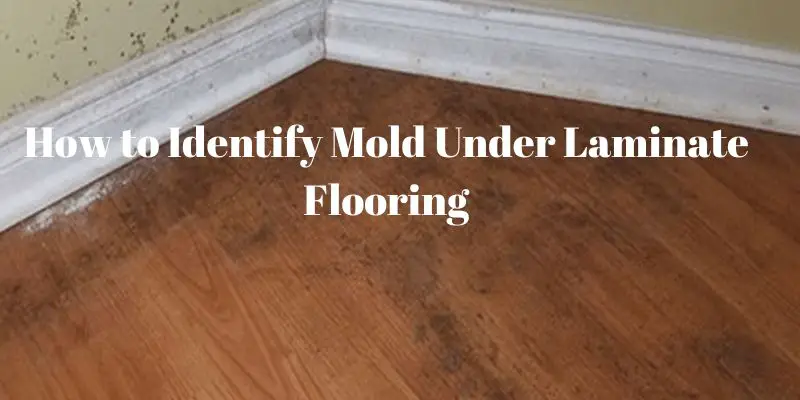
Common signs of mold under laminate flooring
Mold under laminate flooring is not always visible to the naked eye, but there are several signs that can indicate its presence.
Discoloration:
One of the most common signs is discoloration. If you notice dark spots or patches on your laminate flooring, it could be a sign of mold growth underneath. These spots may appear green, black, or brown and can spread if left untreated.
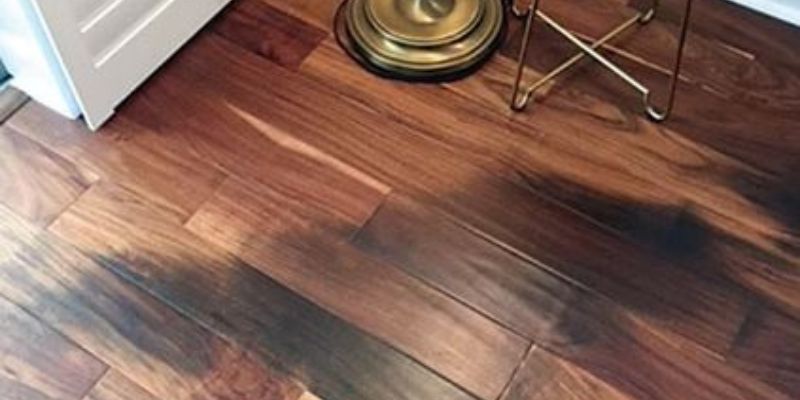
Warping/Buckling:
Another sign to look out for is the warping or buckling of the laminate flooring. Mold thrives in moist environments, and when it grows under laminate flooring, it can cause the floorboards to warp or buckle. If you notice any unevenness or bulging in your flooring, it’s important to investigate further as it could be a sign of mold.
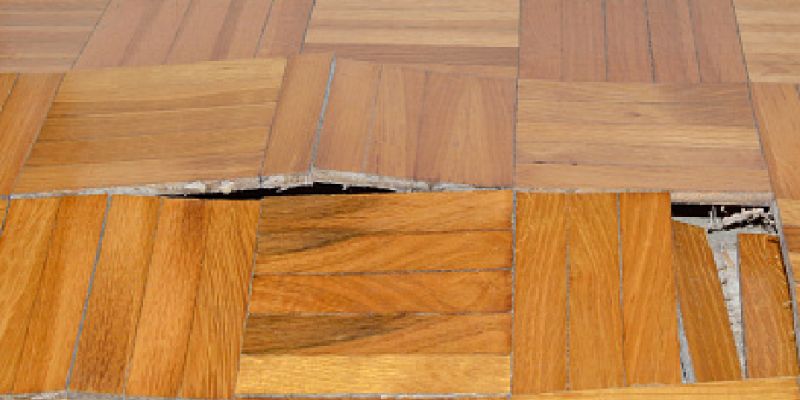
Allergies from Family members
In addition to physical signs, mold under laminate flooring can also have an impact on your health. If you or your family members are experiencing persistent allergies, respiratory problems, or unexplained symptoms such as coughing, sneezing, or itchy eyes, it could be a result of mold exposure. Mold spores can become airborne and circulate in your home, leading to respiratory issues and allergic reactions.
It’s important to note that these signs may not always be exclusive to mold under laminate flooring. However, if you notice a combination of these signs, it’s worth investigating further to determine the presence of mold.
Health risks associated with mold exposure
Exposure to mold can have significant health risks, especially for individuals with respiratory conditions or weakened immune systems. Mold spores can cause allergic reactions, respiratory issues, and even fungal infections in some cases. Prolonged exposure to mold can also lead to chronic health problems such as asthma or other respiratory disorders.
Children, the elderly, and individuals with compromised immune systems are particularly vulnerable to the health risks associated with mold exposure. It’s important to address the issue promptly to prevent further health complications.
Causes of mold under laminate flooring
Mold requires moisture to grow, and there are several common causes of mold under laminate flooring.
Water Leakages
One of the main causes is water intrusion or leaks. If there has been a water leak in your home, whether from a burst pipe, plumbing issue, or flooding, it can create the perfect environment for mold growth under your laminate flooring. Even minor water damage, such as spilled water that seeps into the floorboards, can lead to mold growth if not properly dried and cleaned.
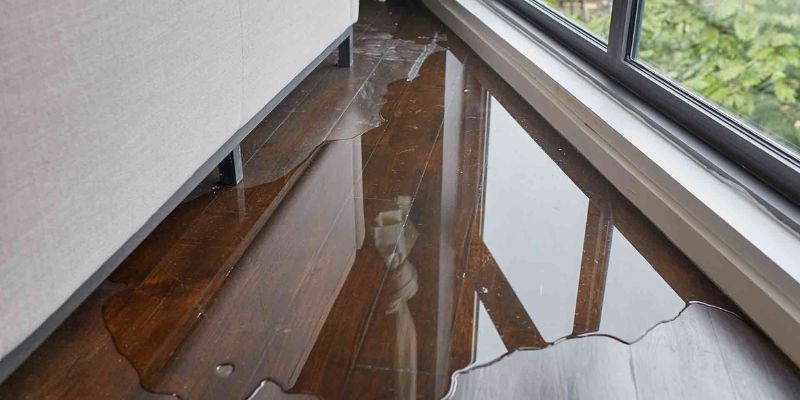
High Humidity
High humidity levels in your home can also contribute to mold growth. Areas with poor ventilation, such as bathrooms or basements, are particularly susceptible to high humidity. If moisture becomes trapped under your laminate flooring due to high humidity levels, it can provide an ideal breeding ground for mold.

Poor Floor Installation
Poorly installed or damaged laminate flooring can also increase the risk of mold growth. If the flooring is not properly sealed or if there are gaps between the floorboards, moisture can seep through and accumulate underneath, leading to mold growth.
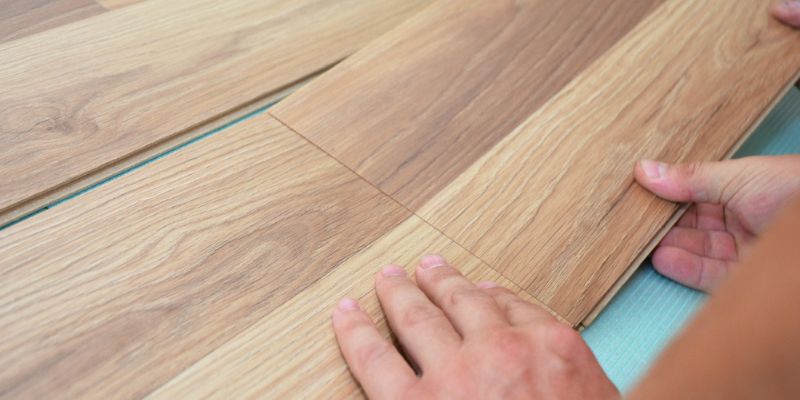
Prevention and maintenance tips to avoid mold growth
Preventing mold growth under laminate flooring is essential to maintaining a healthy living environment. Here are some tips to help you prevent mold growth:
- Ensure proper installation: Hire a professional to install your laminate flooring to ensure it is properly sealed and there are no gaps or spaces where moisture can collect.
- Maintain proper indoor humidity levels: Invest in a dehumidifier to control humidity levels in your home, especially in areas prone to high humidity such as bathrooms and basements.
- Promptly address water leaks or spills: If you notice any water leaks or spills, address them immediately. Dry the affected area thoroughly and ensure it is properly ventilated to prevent moisture buildup.
- Use mold-resistant materials: When installing laminate flooring, opt for mold-resistant materials or those specifically designed for areas with high moisture levels.
- Regularly clean and inspect your flooring: Regularly clean and inspect your laminate flooring for any signs of discoloration, warping, or damage. Address any issues promptly to prevent mold growth.
Taking these preventive measures can significantly reduce the risk of mold growth under your laminate flooring and help maintain a healthy indoor environment.
How to detect and confirm the presence of mold
If you suspect mold under your laminate flooring, it’s important to properly detect and confirm its presence before taking any remedial action. Here are some steps to follow:
- Visual inspection: Conduct a visual inspection of your laminate flooring, looking for any signs of discoloration, warping, or unusual spots. Pay attention to areas near water sources or where moisture may accumulate.
- Smell test: Mold often produces a musty odor. If you notice any unusual smells, particularly near your laminate flooring, it could be an indication of mold growth.
- Moisture testing: Use a moisture meter to measure the moisture levels in your flooring. Elevated moisture levels can indicate the presence of mold.
- Professional mold testing: If you are unable to detect or confirm the presence of mold on your own, consider hiring a professional mold testing company. They can conduct air or surface sampling to accurately identify the presence of mold and determine its type.
It’s important to note that if you suspect mold under your laminate flooring, it’s best to consult with a professional for accurate detection and confirmation.
How to safely remove mold from under laminate flooring
If mold is confirmed to be present under your laminate flooring, it’s crucial to take immediate action to remove it safely. Here are the steps to follow:
- Safety precautions: Before starting the removal process, ensure you are wearing proper protective gear such as gloves, goggles, and a mask to prevent exposure to mold spores.
- Isolate the area: Seal off the affected area to prevent the spread of mold spores to other parts of your home. Use plastic sheets or tarps to create a barrier and ensure proper ventilation by using fans and opening windows.
- Remove affected flooring: Carefully remove the affected laminate flooring, taking care not to disturb or spread mold spores. Dispose of the flooring in sealed bags to prevent further contamination.
- Clean and disinfect: Thoroughly clean the subfloor and surrounding areas with a mold-killing solution. Use a stiff brush or sponge to scrub away any visible mold. Allow the area to dry completely.
- Monitor and prevent future mold growth: After removing the mold, it’s important to monitor the area for any signs of recurring mold growth. Implement preventive measures such as maintaining proper ventilation and controlling humidity levels to prevent future mold problems.
You can read a more detailed way on how to remove the growth of mold on laminate floors here.
When Should I Consider Professional Mold remediation services?
While minor mold issues can often be resolved through DIY removal methods, there are instances when it’s best to seek professional mold remediation services. Here are some situations where professional assistance may be necessary:
- Extensive mold growth: If the mold growth is extensive, covering a large area, or has spread to multiple rooms, it’s recommended to hire professionals. They have the expertise and equipment to handle large-scale mold remediation safely.
- Toxic mold: Some types of mold, such as black mold (Stachybotrys chartarum), can release toxic spores that pose serious health risks. If you suspect the presence of toxic mold, it’s crucial to seek professional help.
- Underlying structural damage: If the mold growth has caused significant damage to the subfloor or underlying structure, it’s important to consult with professionals who can assess the extent of the damage and provide appropriate remediation.
Professional mold remediation services can ensure the safe and effective removal of mold, restore the affected areas, and help prevent future mold growth.
How to Prevent Future Mold Growth
Once you have successfully removed mold from under your laminate flooring, it’s important to take preventive measures to avoid future mold growth. Here are some tips to help you prevent mold:
- Regularly inspect and maintain your flooring: Conduct regular inspections of your laminate flooring to check for any signs of damage, warping, or moisture buildup. Address any issues promptly.
- Control indoor humidity: Use dehumidifiers or ventilation systems to control indoor humidity levels, especially in areas prone to high humidity.
- Properly ventilate: Ensure proper ventilation in areas such as bathrooms, kitchens, and basements to reduce moisture buildup.
- Clean up spills promptly: If you spill any liquids on your laminate flooring, clean them up promptly and thoroughly dry the area to prevent moisture from seeping into the floorboards.
- Use mold-resistant products: When replacing or installing new flooring, opt for mold-resistant materials to minimize the risk of future mold growth.
By implementing these preventive measures, you can significantly reduce the chances of mold returning and maintain a healthy living environment.
Conclusion
Mold under laminate flooring is a hidden menace that can have detrimental effects on your health and property. By being aware of the common signs to look out for and taking preventive measures, you can minimize the risk of mold growth. If you suspect mold under your laminate flooring, it’s important to properly detect and confirm its presence before taking any remedial action. Whether you choose to handle mold removal yourself or hire professionals, ensuring the safe and effective removal of mold is crucial.
Remember, prevention is key. Regularly inspecting and maintaining your laminate flooring, controlling indoor humidity levels, and promptly addressing any signs of water damage or moisture buildup are essential steps in preventing mold growth. By staying informed and taking proactive measures, you can safeguard your well-being and the structural integrity of your home, ensuring a healthy and safe living environment for you and your loved ones.

